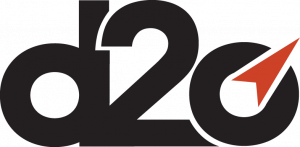Monthly forecasts are incompatible with daily scheduling
Rolling, daily forecast is the only way to optimize the use of resources to align with expected business. SaaS platforms, like PMI, are using predictive analytics to give a realistic outlook, short term and long term; facilitating and speeding up the forecasting process dramatically.
Most companies still create annual budgets with fantastical revenue goals, and record breaking bottom line. These budgets then give monthly, aspirational forecasts. There is nothing wrong with aiming high, having something to strive for. But this method fails to look at how and when during the month, the property achieved revenues last year, what happened day to day? Furthermore, costs and resources will be fixed in an effort to manage and avoid overspending rather than aligning with the rapid changes in daily operation.
Let’s say that a monthly forecast aims for a restaurant revenue 120 000€. To be able to serve this, the restaurant needs 1 680 hours for a 35% labour cost. Since the forecast is not saying anything about when or how the revenue will be generated, the restaurant manager will distribute the hours more or less evenly every week.
- If the actual revenue distribution changes from day to day and week to week, because we rely on gut feeling rather than data, the workload and service will be different every day. Not the employees nor the guest will know what to get when they come the property.
- If 20% of the revenue comes from one event towards the end of the month, we need to hire extra staff to deal with the volume, because all your planned resources are already depleted
- If actual revenue only amounts to 100 000, the restaurant manager will still be using the 1680 hours. Labour cost is kept, but the ratio ends at 42%.
Considering the details of past daily business is a very complex and time-consuming job for anyone. Therefore, the use of predictive analytics tools, like PMI, will speed up the process dramatically and free up labour to focus on operation and optimizing performance.
Predictive analytics uses machine learning to dig through days, months and years of data in an instant. With daily import of the latest OTB figures, your period-end predictions are always up-to date, for every day and every department.
Armed with realistic expectations for the upcoming weeks (and months), department heads are better equipped to schedule labour and plan resources for when they are needed. This will result in a more consistent workload and thus, a more consistent service level, benefiting employees, guests, and owners.




























